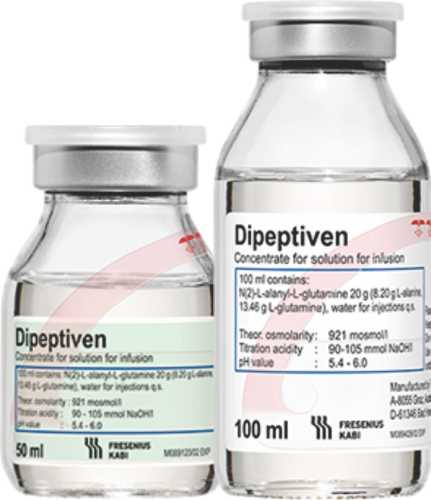1. Eagle H. Amino acid metabolism in mammalian cell cultures. Science 1959; 130: 432—7.
2. Sacks GS, Kudsk KA. Maintaining mucosal immunity during parenteral feeding with
surrogates to enteral nutrition. Nutr Clin Pract 2003; 18: 483—8.
3. Newsholme EA, Parry-Billings M. Properties of glutamine release from muscle and its
importance for the immune system. J Parenter Enteral Nutr 1990; 14: 63S—7S.
4. Parry-Billings M, Evans J, Calder PC, Newsholme EA. Does glutamine contribute to
immunosuppression after major burns? Lancet 1990; 336: 523—5.
5. Koeppen BM. The kidney and acid-base regulation. Adv Physiol Educ 2009; 33: 275—81.
6. Coster J, McCauley R, Hall J. Glutamine: metabolism and application in nutrition
support. Asia Pacific J Clin Nutr 2004; 13: 25—31.
7. Stumvoll M, Perriello G, Meyer C, Gerich J. Role of glutamine in human carbohydrate
metabolism in kidney and other tissues. Kidney Int 1999; 55: 778—92.
8. Watford M. Glutamine and glutamate metabolism across the liver sinusoid. J Nutr 2000;
130: 983S—7S.
9. Wischmeyer PE. Clinical applications of L-glutamine: past, present, and future. Nutr Clin
Pract 2003; 18: 377—85.
10. Ritz P, Salle A, Simard G, Dumas JF, Foussard F, Malthiery Y. Effects of changes in water
compartments on physiology and metabolism. Eur J Clin Nutr 2003; 57(Suppl 2): S2—5.
11. Haussinger D, Lang F, Gerok W. Regulation of cell function by the cellular hydration
state. Am J Physiol 1994; 267: E343—55.
12. Roth E. Nonnutritive effects of glutamine. J Nutr 2008; 138: 2025S—31S.
13. Newsholme P, Lima MMR, Procopio J, et al. Glutamine and glutamate as vital
metabolites. Braz J Med Biol Res 2003; 36: 153—63.
14. Amores-Sanchez MI, Medina MA. Glutamine, as a precursor of glutathione, and oxidative
stress. Mol Genet Metab 1999; 67: 100—5.
15. Furst P. Intracellular muscle free amino acids — their measurement and function.
Proc Nutr Soc 1983; 42: 451—62.
16. Bergstrom J, Furst P, Noree LO, Vinnars E. Intracellular free amino acid concentration
in human muscle tissue. J Appl Physiol 1974; 36: 693—7.
17. Kuhn KS, Schuhmann K, Stehle P, Darmaun D, Furst P. Determination of glutamine
in muscle protein facilitates accurate assessment of proteolysis and de novo
synthesis-derived endogenous glutamine production. Am J Clin Nutr 1999; 70: 484—9.
18. Souba WW, Klimberg VS, Plumley DA, et al. The role of glutamine in maintaining a
healthy gut and supporting the metabolic response to injury and infection. J Surg Res
1990; 48: 383—91.
19. Oudemans-van Straaten HM, Bosman RJ, Treskes M, van der Spoel HJ, Zandstra DF.
Plasma glutamine depletion and patient outcome in acute ICU admissions. Intensive Care
Med 2001; 27: 84—90.
20. Wernerman J. Glutamine supplementation. Ann Intensive Care 2011; 1: 25.
21. Hammarqvist F, Wernerman J, von der Decken A, Vinnars E. Alanyl-glutamine
counteracts the depletion of free glutamine and the postoperative decline in protein
synthesis in skeletal muscle. Ann Surg 1990; 212: 637—44.
22. Stehle P, Zander J, Mertes N, et al. Effect of parenteral glutamine peptide
supplements on muscle glutamine loss and nitrogen balance after major surgery.
Lancet 1989; 1(8632): 231—3.
23. Roth E, Funovics J, Muhlbacher F, et al. Metabolic disorders in severe abdominal sepsis:
glutamine deficiency in skeletal muscle. Clin Nutr 1982; 1: 25—41.
24. Wernerman J. Clinical use of glutamine supplementation. J Nutr 2008; 138: 2040S—4S.
25. Rodas PC, Rooyackers O, Hebert C, Norberg A, Wernerman J. Glutamine and
glutathione at ICU admission in relation to outcome. Clin Sci (Lond) 2012; 122: 591—7.
26. Lacey JM, Wilmore DW. Is glutamine a conditionally essential amino acid? Nutr Rev
1990; 48: 297—309.
27. Hammarqvist F, Luo J-L, Cotgreave IA, Andersson K, Wernerman J. Skeletal muscle
glutathione is depleted in critically ill patients. Crit Care Med 1997; 25: 78—84.
28. Hong RW, Rounds JD, Helton WS, Robinson MK, Wilmore DW. Glutamine preserves liver
glutathione after lethal hepatic injury. Ann Surg 1992; 215: 114—19.
29. Yu J-C, Jiang Z-M, Li D-M, Yang N-F, Bai M-X. Alanyl-glutamine preserves hepatic
glutathione stores after 5-FU treatment. Clin Nutr 1996; 15: 261—5.
30. Chen K, Nezu R, Sando K, et al. Influence of glutamine-supplemented parenteral
nutrition on intestinal amino acid metabolism in rats after small bowel resection. Surg
Today 1996; 26: 618—23.
31.Glutamine product information binder. Dipeptiven®, Glamin®: parenteral nutrition.
Version 2, January 2006. Fresenius Kabi, data on file.
32.Dipeptiven (L-alanyl-L-glutamine). Summary of product characteristics
